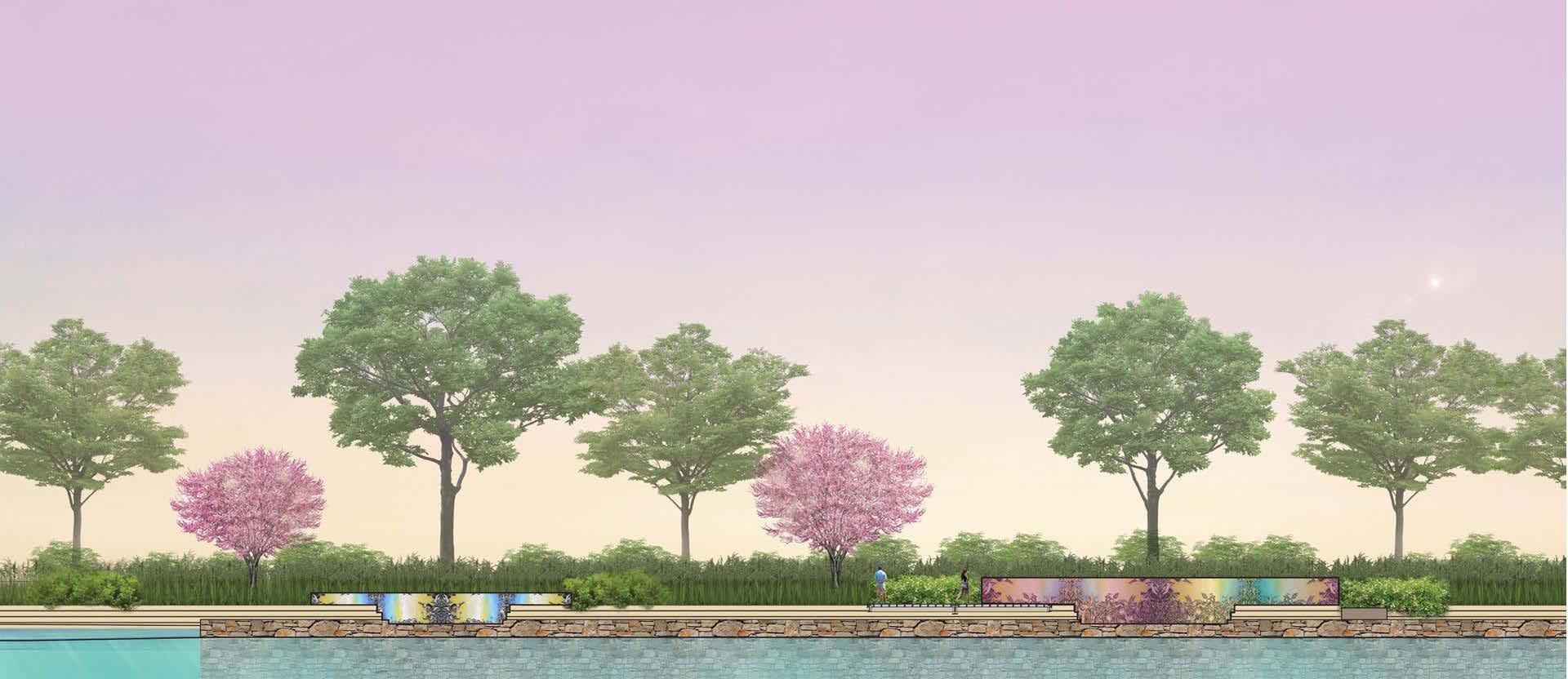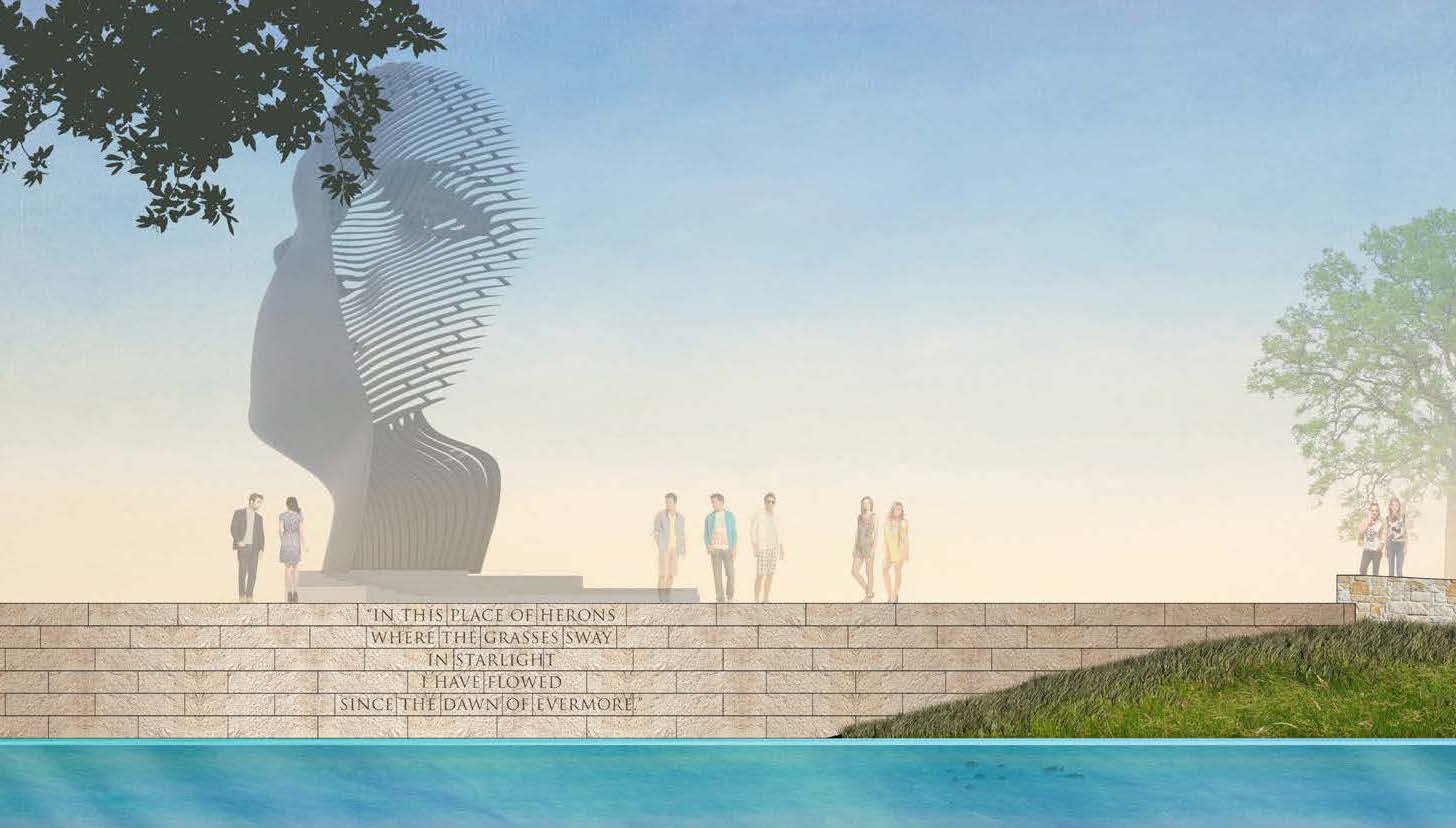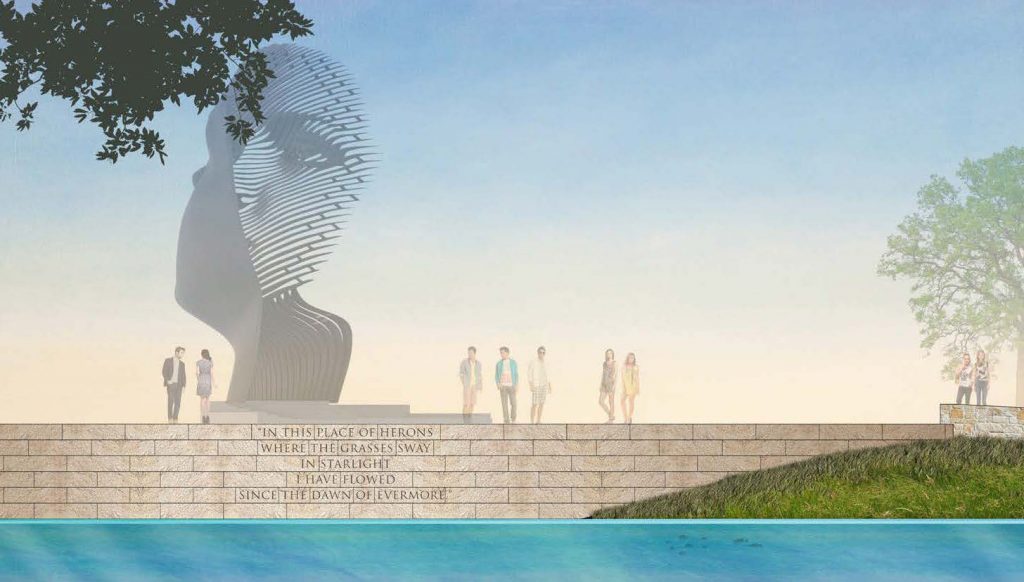A once-neglected waterway that separated low-income Latinos from affluent Caucasians in downtown San Antonio is becoming a world-class urban park reflecting the city’s multicultural identity and history.
“San Pedro Creek represents the unique cultural identification of San Antonio embodied through the Tree of Life. The restoration of San Pedro Creek will create an internationally recognized linear park that exemplifies and tells the story of the families of San Antonio and Bexar County,” said Henry R. Muñoz, principal-in-charge and cultural design leader of the project, in a press release.
On May 5, the first phase of the San Pedro Creek Improvement Project was unveiled. The completed San Pedro Culture Park will span 2.2 miles through downtown, and reflect, as Muñoz tells Remezcla, a figurative and physical codex of San Antonio’s unique blended culture and history. The project is a collaboration of scholars, artists, writers and designers coming together to share what Muñoz says is the true story of the founding of San Antonio, Texas and the United States. “It is a story of unity and not divisiveness and a place that brings people together instead of a wall to separate them,” he says.
Bexar County and The San Antonio River Authority commissioned the project to revitalize the area as well as address flood control issues. The completed project will include 60,000 linear feet of new walls, replace eight street bridges and all utilities while adding four miles of walking trails and 11 acres of landscaping. The creek portion includes a tunnel inlet with the Plaza de Fundación and its “rain from the Heavens” public art installment. Custom tile work adorns the surrounding 12 generational benches.

The team compares the project’s potential impact to west downtown San Antonio as the Museum Reach-Urban Segment has on the northern section of the San Antonio River, which doubled the length on the world-renowned River Walk. But while the River Walk is a global tourist destination, Muñoz (of Muñoz & Company, an award-winning, minority-owned multi-platform design and management firm that interprets the cultural identity of American society in the 21st century) hopes this new park will serve as an alternative experience for locals.
The design of the park came about through a Latino Urbanism approach that addresses multicultural issues in creating cities that are economically and culturally sustainable while honoring local traditions and culture. The team says the park is “both a real and allegorical landscape in which seemingly magical and dreamlike elements coexist with the rational and the ubiquitous.” This sense of magic realism is pervasive in Latin American literature and is exposed throughout the project’s landscape.
Muñoz says the team got out into the community to tap into untold stories from the elder generations. “Centennial Plaza is very likely the place of the first Presidio, the first Alamo, if you will,” he says. “In the water, you’ll see these branches. The branches are rocks over which the water flows but when you look at the water you’ll see the Tree of Life, which is a very important symbol in Latino cultures throughout the Americas.”
The benches are wrapped in patterns created by artist Michael Menchaca who works with ancient imagery found in pre-Columbian codexes, but with a sense toward animation. The monumental mural honors the concept of, “Te todos caminos somos todos uno,” designed by artist Adriana Garcia. Across the creek is one of Muñoz’s favorite findings: The creek once had huge brown shrimp and is the origin of the name behind downtown’s Camaron Street.
“What a first this park is. The first large-scale exploration of Latino identity in a major United States city,” Muñoz reflected. “Historic collaboration of thinkers, artists, writers, scholars, community voice, elected officials who have the courage to invest in this project; engineers, architects, volunteers, all working together on something like no other place in the world.”




